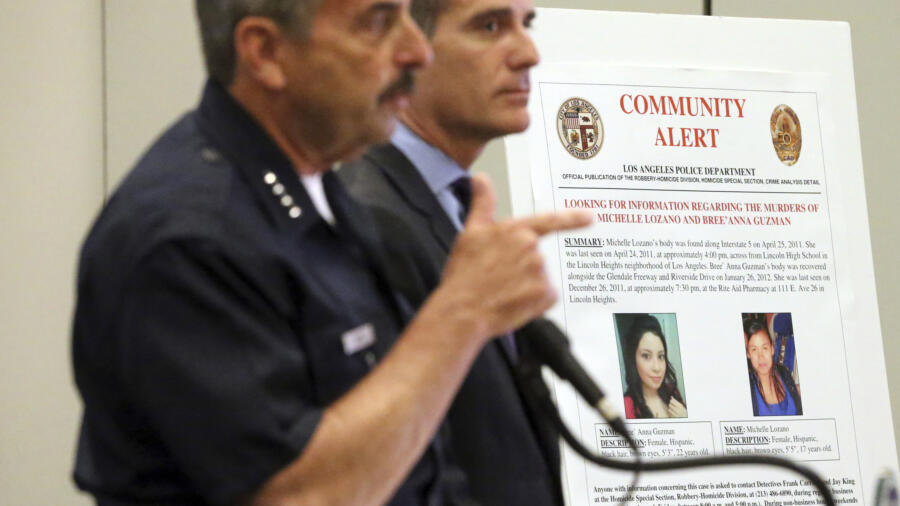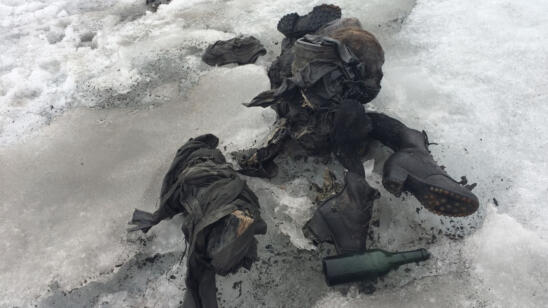The year 2017 was an explosive one on the crime-news front. But for the families of some long-ago crime victims, the past 12 months were especially memorable since their loved ones’ cases—some unsolved for decades—took dramatic new steps toward being solved. Resolving long-cold cases isn’t a common occurrence, but it is happening more often thanks to advances in DNA testing, evidence collection and technology.
“There’s a solvability factor when looking at cold cases,” says Ryan Backmann, founder of the Florida-based organization Project: Cold Case. “More crimes are now being solved because of DNA testing, social media and the [24-hour news] media. In the ’70s, if the victim’s blood was mixed with the suspect’s blood, they couldn’t separate it.”
Here are five of the year’s biggest cold cases that saw positive progress in 2017.
Suzanne Bombardier
In 1980, 14-year-old Suzanne Bombardier was kidnapped while babysitting her nieces in Antioch, California. Her body was found in the San Joaquin River five days later; she’d been raped and stabbed in the heart. Police had very few leads, and the case was the Bay Area city’s oldest cold case on record. That is, until a DNA match led police to arrest 63-year-old Mitchell Lynn Bacom for the murder. Bacom was reportedly a family acquaintance of the Bombardiers.
While the suspect—who has a “long and violent” criminal history, including convictions for rape, robbery and burglary—has not yet been tried, it’s an encouraging development.
Making strides in very old cold cases like Bombardier’s is difficult, says Joe Giacalone, retired NYPD detective sergeant and former commanding officer of the Bronx Cold Case Homicide Squad. “There can be so many problems. An eyewitness is [less likely] to remember things from 37 years ago.”
Bombardier’s dormant case was reopened in 2015 and new biological evidence was submitted that year. Bacom’s DNA was matched using the FBI’s Combined DNA Index System in 2017. Police told reporters they never gave up on finding the girl’s killer, though officers noted that the case against Bacom is still in its preliminary stages. Bacom entered no plea after prosecutors filed special circumstances murder charges against him last week.
Still, Giacalone says, “just because you have [their] DNA doesn’t make someone the killer. [It depends on] how the evidence was packaged, tested …There are a lot of things that can go wrong [with evidence collection].”
Bree’Anna Guzman and Michelle Lozano
In April 2011, the body of 17-year-old Michelle Lozano was found on the Golden State Freeway in California. She was naked, wrapped in plastic bags and had been stuffed in a plastic container. Her body was found just one day after she was last seen in front of her high school.
The following year, another young woman, Bree’Anna Guzman, 22, disappeared as she walked to Rite Aid for cough medicine. She lived less than a mile from Lozano; her body, too, was later found on the side of a highway.
Six years after the bodies were found, police got a DNA match on a sample they’d secretly collected when a suspect spit on the sidewalk. It was a stunning break in a case that had been cold for years, and the Los Angeles Police Department used a controversial type of DNA testing called familial DNA to allegedly connect a Torrance, California man named Geovanni Borjas with the crimes.
“With a familial search, we [scour] our criminal database for a relation to a person,” explains Giacalone. In other words, officials search their databases for relatives of the perpetrator, who share similar DNA because they’re related.
“It’s controversial because you’re targeting people that may not have done anything wrong,” Giacalone says. Still, he says he considers it “the greatest tool in cold cases since the discovery of DNA.”
Though familial DNA searches are still not widely used, the state of California has solved a number of crimes using this system, including the high-profile Grim Sleeper case.
In May, Borjas was charged with two counts each of murder and forcible rape and one count of kidnapping. He could receive the death penalty if convicted. He has not yet been tried.
Janie Landers
At the time of her death in March 1979, Janie Landers, 18, lived in an Oregon state facility for individuals with severe mental disabilities. The young woman “operated at the level of an 8-year-old,” according to reports. She was found beaten and stabbed to death—but not sexually assaulted—five days after going missing near the Salem facility. She had defensive wounds, and autopsy results revealed blunt-force trauma as her cause of death. It’s believed she’d gotten a ride from someone who killed her in a fit of rage.
After Landers’ case went cold, the young woman’s sister kept pressing local investigators, and the case was reopened when a new officer pulled it from the cold-case file in 2015. The officer ran Landers’ bloody shirt through the FBI’s DNA database again, and this time there was a hit. The match? A convicted rapist named Gerald Dunlap who had reportedly worked in the laundry room at the facility where Landers had lived.
Although Dunlap died in prison in 2002, investigators worked diligently to confirm his identity as the girl’s alleged killer. They used his photo to interview witnesses who confirmed that they had, indeed, seen him with Landers.
Identifying a suspect who turn out to be already deceased happens occasionally, in Giacalone’s experience, and “it [elicits] mixed feelings for the victims’ families,” he says. “They have closure, but it [robs] them of the justice part.”
Teresa Broudreaux
In March 1980, Teresa Broudreaux, 20, of the Los Angeles area, headed to her sister’s house after an argument with her husband, Ronnie Fematt. Broudreaux, then 5 months pregnant, vanished after leaving her sister’s that evening. Her naked body was later found on a beach in Palos Verdes Estates. She’d been beaten over the head. Broudreaux’s killing was believed to be a botched sexual assault, though officers aren’t sure if she was assaulted.
Investigators had a dearth of leads and zero witnesses. “Teresa Broudreaux’s case was cold almost right away, because when they found the body, they had nothing: no witnesses, and it was 1980, so they weren’t even thinking about DNA,” says Giacalone.
In 2013, officials ran DNA from the scene through the database again. This time they got a match, but it wasn’t until 2017 that they had sufficient evidence to charge Robert Yniguez, 65.
Yniguez had been previously arrested on suspicion for sexual assault, and also served eight years in prison for a different rape. It’s not believed that Broudreaux and Yniguez knew each other. Yniguez was charged with capital murder (which makes him eligible for the death penalty), but has not yet been tried.
Freddie Farah
In 1974, Freddie Farah of Jacksonville, Florida was gunned down in the convenience store he owned during an attempted armed robbery. In 2017, a whopping 43 years later, the long-cold case saw some daylight when Johnnie L. Miller, a popular New Orleans street performer, was arrested for Farah’s murder.
Miller’s palm print—left on food items near the convenience store counter—matched a profile found in the FBI’s Integrated Automated Fingerprint Identification System (AFIS). At the time of this development, Farah’s murder had been attracting renewed attention after Project: Cold Case highlighted it on their website.
“[The palm print] hadn’t been run since the late ’90s,”says Backmann. “They ran it and got a hit.”
The suspect had been performing as a “human statue” in New Orleans for more than 20 years under the nickname “Uncle Louie.”
When police interviewed him, Miller reportedly denied his involvement, “but they had his fingerprints on items in the store and a 14-year old witness who remembered everything,” says Backmann. “Within 6 months they had made an arrest.”
Miller, who was 17 at the time the crime was committed, is awaiting trial.
Related Features:
The Cold Case Murders That Keep Retired Detectives Up at Night
How to Tell If Someone is Lying: A Retired Detective Reveals All
The Austin Yogurt Shop Murders
Closed Cases Aren’t Closed Cases
The Gruesome 1960s Campus Murder That America Forgot
Check Out Cold Case Files: The Podcast


